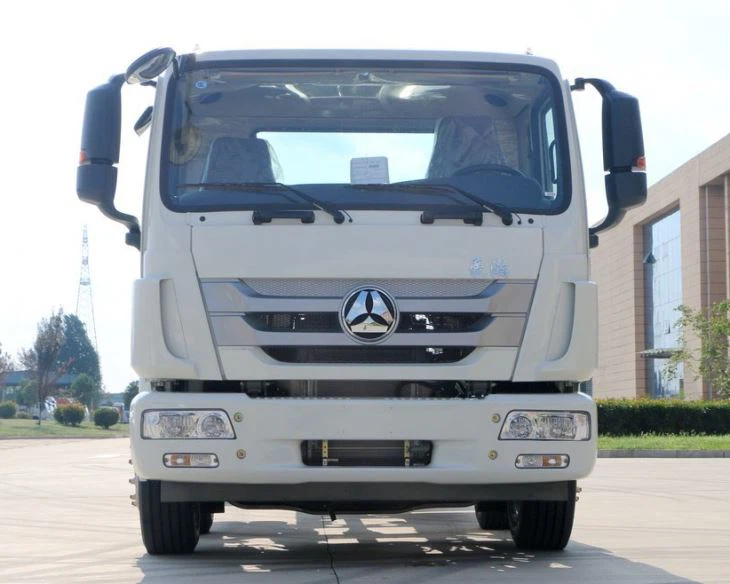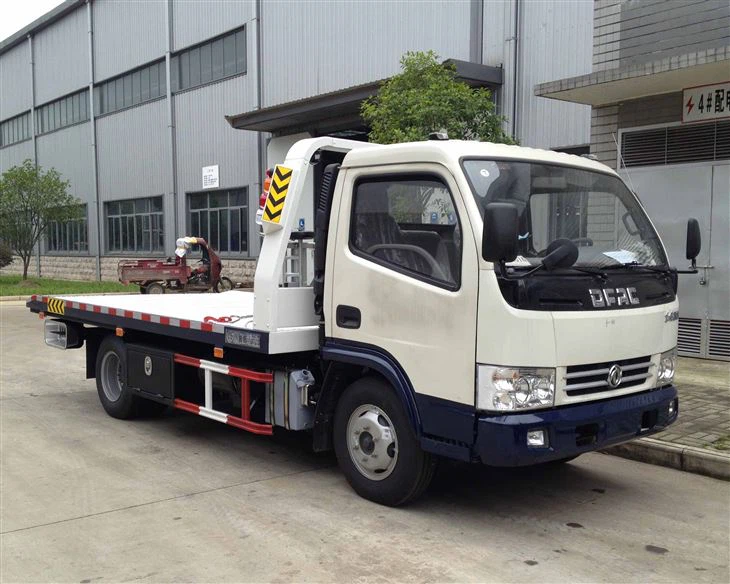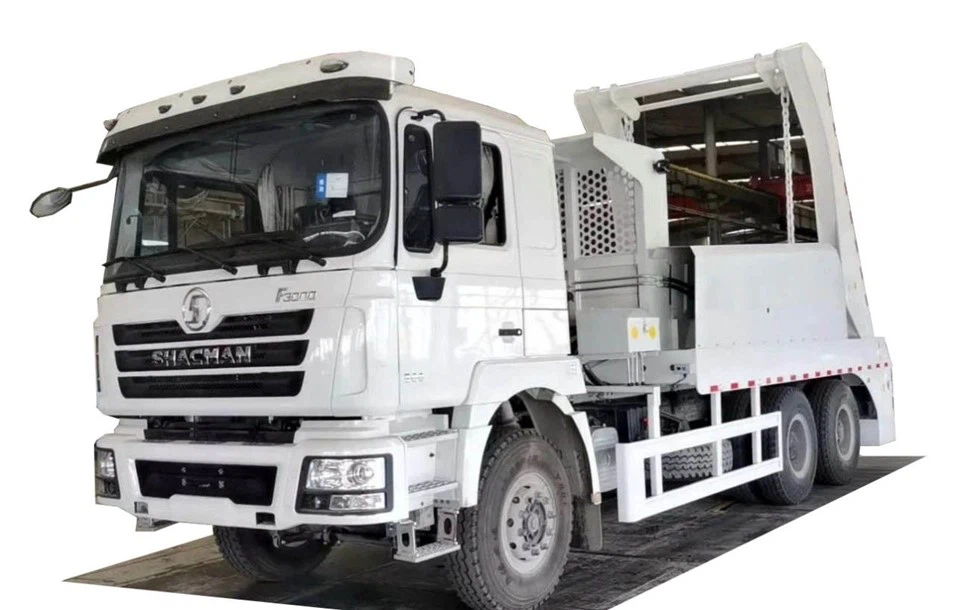Understanding Garbage Truck Turning Radius: Importance, Factors, and Tips

Introduction
When it comes to the operation of garbage trucks, the turning radius is a vital aspect that significantly impacts their maneuverability and efficiency. The turning radius refers to the minimum circular turn a vehicle can make, which is crucial for navigating through tight urban environments and narrow streets. For waste management companies and city planners, understanding the turning radius of garbage trucks is essential for route planning, minimizing the risk of accidents, and ensuring prompt service delivery. In this article, we will delve into the factors affecting the turning radius of garbage trucks, its significance in waste management, and practical tips for optimizing routes.
What is a Turning Radius?
The turning radius is the radius of the smallest circular turn a vehicle can make. For garbage trucks, this involves not only the overall size and design of the vehicle but also other mechanical features. In general, the smaller the turning radius, the easier it is for a vehicle to navigate through tight spaces.
Types of Turning Radius
In the context of garbage trucks, we can categorize turning radii into two main types:
- Inside Turning Radius: The distance from the center of the turning circle to the inner edge of the vehicle’s track.
- Outside Turning Radius: The distance from the center to the outer edge, which is generally larger and more relevant for larger vehicles like garbage trucks.
Factors Affecting the Turning Radius of Garbage Trucks
Several factors influence the turning radius of garbage trucks, including vehicle design, weight distribution, and wheelbase length.
1. Vehicle Size and Design
The overall dimensions of a garbage truck—such as its length, width, and height—play a significant role in determining its turning radius. Larger vehicles typically have a wider turning radius, making them less maneuverable in confined spaces.

2. Wheelbase Length
The wheelbase is the distance between the front and rear axles of the truck. A longer wheelbase generally results in a larger turning radius. Garbage trucks with extended wheelbases may struggle to navigate tight corners.
3. Steering Mechanism
The type of steering mechanism used in garbage trucks can directly affect their turning capabilities. Articulated vehicles, for instance, can achieve a smaller turning circle compared to rigid vehicles.
4. Weight Distribution
Proper weight distribution is essential for vehicle stability and maneuverability. Heavily loaded trucks have a larger turning radius due to the additional weight affecting their suspension and overall turning dynamics.
Importance of Turning Radius for Garbage Trucks
Understanding the turning radius of garbage trucks is crucial for several reasons:
1. Route Efficiency
Route planning relies on understanding vehicle capabilities. Routes must be designed with the turning radius in mind to ensure timely and efficient collection of waste.
2. Safety Considerations
A smaller turning radius can reduce the risk of accidents, especially in urban areas with pedestrians and cyclists. Understanding a garbage truck’s limitations can help in setting up safer routes.
3. Minimizing Property Damage
Garbage trucks often navigate close to properties such as homes and businesses. Knowing the turning radius helps avoid unnecessary property damage from collisions.
Practical Examples of Turning Radius in Action
To illustrate the significance of turning radius, let’s look at some practical scenarios:
Case Study 1: Urban vs. Rural Settings
In urban environments, garbage trucks often face narrow streets, heavy traffic, and parking challenges. For instance, a standard garbage truck with a 24-foot turning radius may struggle to navigate a cul-de-sac efficiently, whereas a smaller refuse vehicle with an 18-foot turning radius would handle these obstacles with ease.
Case Study 2: Different Truck Configurations
Different garbage truck configurations also result in varying turning radii. For example:
| Truck Type | Wheelbase (ft) | Turning Radius (ft) |
|---|---|---|
| Standard Garbage Truck | 22 | 28 |
| Rear Loader | 20 | 24 |
| Front Loader | 24 | 30 |
Tips for Optimizing Garbage Truck Routes Based on Turning Radius
Here are some practical tips for waste management companies to optimize routes considering turning radius:
1. Route Mapping Software
Utilizing route mapping software that takes turning radius into account can improve efficiency. Such software can help identify the best routes based on the vehicle specifications.
2. Training for Operators
Providing training for garbage truck operators on maneuvering techniques in tight spaces can improve route execution and safety significantly.
3. Regular Vehicle Assessments
Conducting regular assessments of the fleet to ensure that they meet the required specifications for turning radius can provide insights into necessary upgrades or replacements.

4. Consultation with City Planners
Collaborating with city planners can lead to better infrastructure development, such as wider roads and designated turning points that accommodate larger garbage trucks.
Future Trends in Garbage Truck Maneuverability
The waste management industry is evolving, leading to innovations in vehicle design and technology that can affect turning radius:
1. Electric Garbage Trucks
As electric garbage trucks become more common, their design can also influence turning radius, potentially allowing for more compact models with better maneuverability.
2. Automated Waste Collection
Futuristic automated garbage collection vehicles may adopt designs that prioritize smaller turning radii, improving their capabilities in urban areas.
Frequently Asked Questions (FAQ)
1. What is a typical turning radius for a garbage truck?
The typical turning radius for a garbage truck can range from 24 to 30 feet, depending on the design and configuration of the vehicle.
2. How does the turning radius affect waste collection routes?
A larger turning radius may limit access to certain areas, complicating routes and potentially delaying waste collection services.
3. Can route planning software help improve truck efficiency?
Yes, using route planning software that considers turning radius can significantly enhance the efficiency of garbage collection operations by optimizing travel paths.
4. How can drivers improve their vehicle maneuverability?
Drivers can improve maneuverability by practicing sharp turns in open spaces, applying the proper speed when turning, and knowing their vehicle’s dimensions.

5. Are there regulations regarding garbage truck sizes?
Yes, different municipalities have regulations governing vehicle sizes and weights, which can influence the design of garbage trucks deployed in those areas.
6. What strategies can minimize property damage during collection?
Strategies include route planning that considers turning radius, trained operators, and wider turning points designed in neighborhoods to accommodate larger vehicles.
